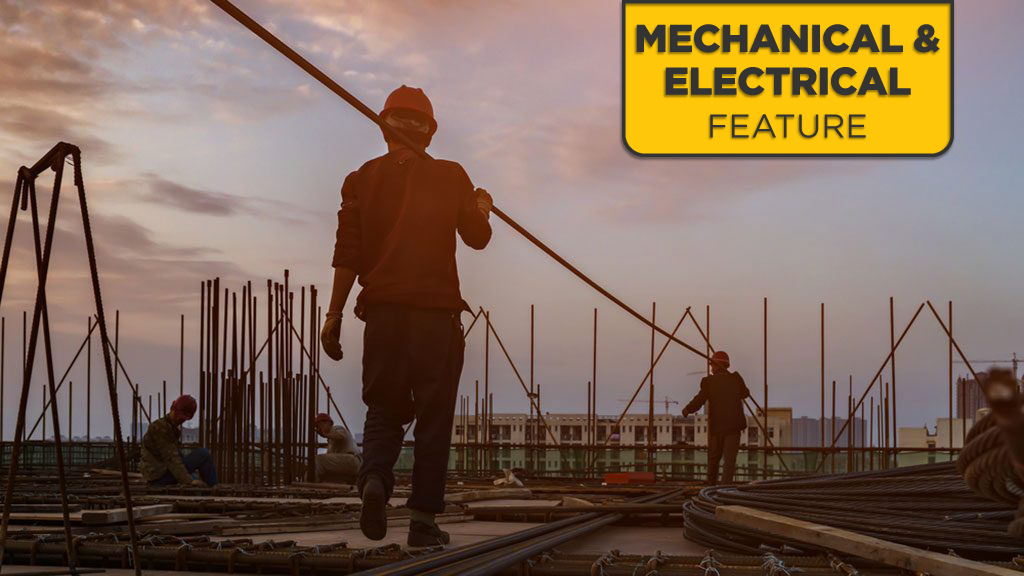Considering the territory’s harsh climate and vulnerability to climate change, it was perhaps appropriate the 2018 Energy and Mines Ministers Conference was held in Iqaluit, Nunavut.
At that conference, the federal, provincial and territorial ministers responsible for energy and mining portfolios formally released a far-reaching document which — if its recommendations are implemented — could have profound implications for the construction, heating, refrigeration and air conditioning and allied industries, and Canadians in general.
Officially titled “Paving the Road and Beyond: market transformation road map for energy efficient equipment in the building sector”, the paper was created by Natural Resources Canada’s Office of Energy Efficiency in consultation with the provinces and industry stakeholders and non-profit associations such as the Heating Refrigeration and Air Conditioning Institute of Canada.
Just shy of 100 pages, its sets out a series of aspiratory goals on how the design, manufacture, and installation of highly energy efficient building materials and products will support the transition to a low carbon economy — and the measures needed to achieve that objective.
It focuses on residential windows, space heating, and water heating systems as they are the highest sources of energy consumption. Residential windows account for 35 per cent of a home’s heat loss, space heating constitutes between 56 to 64 per cent of energy use in homes and buildings, while water heating constitutes between eight to 19 per cent.
At the same time, those components offer significant opportunities to reduce energy use by overall figure of more than 35 per cent when “next generation technologies become available.”
As an example, the document cites “emerging technologies under development” which could increase window performance from between 50- to 60-per cent compared to what’s on the market now. Some examples include vacuum and/or aerogel filling to the insulating glass unit, smart blind mechanisms, and improved light weight, non-metal insulating materials such as carbon fibres.
In the space heating sector, some of the new and still-evolving technologies include ground source heat pumps, cold climate air-source heat pumps, and gas heat pumps. If these technologies were utilized on a wide scale, heating consumption could be slashed by 30 per cent and greenhouse gas emissions lowered by 18 megatonnes, it says.
But the road map also cautions that, “These technologies still require significant research and development efforts before they become mainstream.”
The underlining message of the road map is the need for government, the private sector, and non-profit associations to work together to overcome the myriad — and not insignificant — technical and market barriers to incorporating those elements into homes and buildings. Just some of those barriers include high upfront costs, product availability, retrofit challenges — such as installing high efficiency windows, consumer unawareness of new technologies, and a lack of contractor training, knowledge, and experience in designing and installing new products.
To overcome those obstacles, the road map calls for a series of initiatives including product development, large scale product demonstrations, consumer education and awareness, and training incentives.
It underscores the thread which links technical and market research and that of convincing consumers to purchase more energy efficient — but more expensive — systems. Manufacturers are urged to conduct market research to support their own efforts to educate customers on the benefits of new technologies, such as the thermal comfort, safety, and durability provided by high efficiency windows.
In response to a list of emailed questions on what has transpired since the official release of the road map, Natural Resources Canada indicated there has been progress on a number of fronts.
From industry, provincial and territorial governments, academia and non-government associations have come together to participate in a Roadmap Advisory Council and Technology Experts Teams, says Jamie Hulan, director with NRCan’s office of energy efficiency.
These groups have been tasked with assessing the market status of high-efficiency space and water heating technologies and next-generation windows, plus identifying the necessary next steps to continue moving towards. A progress report will be is scheduled to be published later this year, says Hulan.
A digital tool called Lay of the Land is also being developed with the purpose of cataloguing program and projects related to the initiatives outlined in the road map. As of this past February, 180 different programs initiated by various levels of government and industry have been downloaded.
Among the road map’s many recommendations is one which calls for the creation of software tools to help contractors keep up-to-date with space heating equipment design changes — “and developed with Canadian regions in mind.”
Citing the creation of an Air-Source Heat Pump Sizing and Selection Guide, which includes the guide, an addendum of worked examples, and an excel-based operating tool, Hulan says those design advances are taking place. The guide is applicable to new system and replacement system applications and covers all types of air source heat pump and backup systems.
Another topic pinpointed in the road map was the need for incentives and financing programs to encourage homeowners and businesses to pay for costly high-efficiency technologies and products. Asked about that particular issue, Hulan said non-profit associations can play a significant role in increasing consumer awareness of the advantages new technologies offer. Certain high efficiency products will be also eligible for a maximum $5,000 grant through a soon-to-be announced retrofit program, he says.



Recent Comments
comments for this post are closed